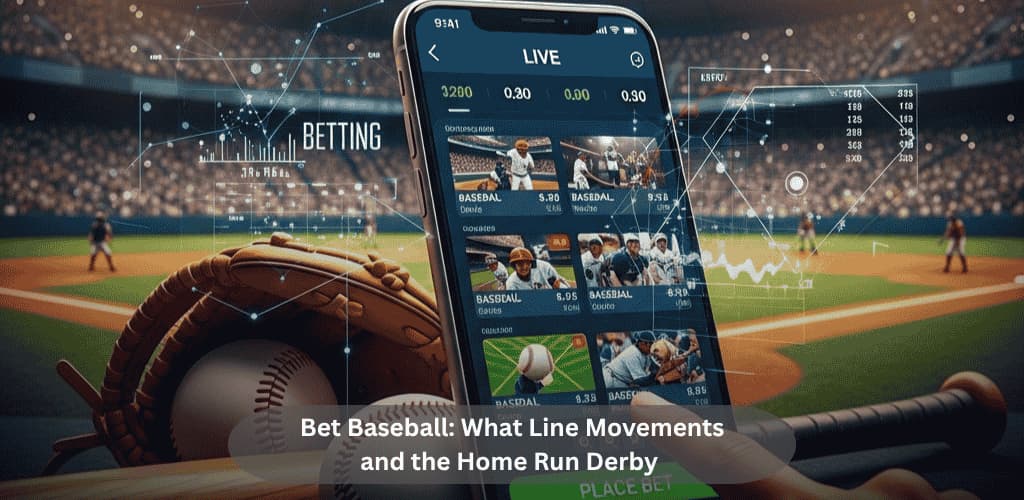Table of Contents
Baseball’s betting markets are full of signals. Some are loud and obvious, others subtle and easy to miss. Learning to read those signals is what separates the casual bettor from the one who understands value. Whether you’re tracking a moneyline shift before first pitch or analyzing the odds before the Home Run Derby, the lesson is the same bet with purpose, not impulse.
Reading Line Movements in Real Time
A common mistake is ignoring how lines move before a game. Odds don’t drift without reason. When a moneyline slides from –118 to –139, the market is reacting to informed betting. That’s not luck, it’s sharp action.
Take a game like Houston vs. Oakland. Two different pitchers, two different stories. One enters off a rough outing but with solid peripherals. The other has a cleaner stat line but struggles under pressure. Sharps study more than ERA. They look at recent command, park fit, and bullpen usage. When they spot imbalance, the money hits fast.
If the total sits flat at 8.5 while the moneyline jumps, that’s another clue. The market sees a controlled game, not chaos. You can learn more about both sides’ expectations by following where that money goes rather than focusing on who looks better on paper.

Try Sportshub Free
Follow 100+ Verified Handicappers
How That Discipline Applies to the Home Run Derby
The same logic carries into the Home Run Derby. Every July, millions wager on one of baseball’s most entertaining events. It looks like pure fun, but the betting behavior mirrors a typical MLB market. The sharpest plays come from understanding patterns, not chasing long odds.
Look at recent results:
2019 – Pete Alonso (+400)
2018 – Bryce Harper (+275)
2017 – Aaron Judge (+180)
2016 – Giancarlo Stanton (+280)
2015 – Todd Frazier (+400)
All five winners were inside the top three in pricing. None were deep longshots. That tells you what the market already knows—favorites win in predictable environments. There’s no reason to overthink a field where only a handful of players have the power and rhythm to go the distance.
Park and Form Matter
Every sharp bettor accounts for context. In-season, that’s weather and bullpen usage. In the derby, it’s park conditions and current form.
Some parks boost home runs, others suppress them. Thin air, short fences, and wind direction can all swing results. A right-handed hitter in a park that favors lefties faces an uphill climb before the event even starts. You need to evaluate that as carefully as you would a starting pitcher’s fit in a ballpark known for fly-ball suppression.
Then there’s rhythm. A hitter crushing fastballs the two weeks before the All-Star break carries momentum that matters. Derby participants who cooled off before the break often fail to find their timing under the spotlight. You want hitters who arrive hot, not those living on early-season stats.
Experience and Execution
Some bettors put stock in prior Derby experience, and it’s worth considering. In the last five years, three winners had done it before, while two were first-timers. Experience can help a player pace himself through rounds, but elite timing and power matter more. In other words, experience helps, but form decides.
In the regular season, the same balance applies. A veteran pitcher might know how to work through jams, but the edge still belongs to the arm in better shape. You want to back performance, not narrative.
The Sharper Mindset
Whether you’re betting on an Astros moneyline or a slugger in the Derby, the discipline doesn’t change. Start with the data, confirm it with movement, and finish with logic. Avoid emotional bets. Avoid chasing longshots because of payout size. The smarter play often looks boring—but it’s where the edge lives.
Sharp bettors let the market confirm what their eyes already see. If the lines stay steady despite public chatter, the odds are right where they should be. If they shift early and hold, that’s signal, not noise. In the same way, if the Derby odds show clear separation at the top, follow it. The favorites win more often than casual bettors think.
Connecting the Dots
Baseball betting, whether daily or seasonal, always comes down to pattern recognition. Line movement before first pitch shows you where sharp confidence lies. The Derby’s odds board does the same—compressed into a single night.
Avoid guessing. Observe how the numbers behave, how the market reacts, and what conditions shape those moves. A bettor who can read both the slow rhythm of a 162-game season and the fast market of a single event develops an edge that lasts.
Closing Thoughts
The beauty of baseball is in its balance. It rewards patience and punishes panic. The betting market mirrors that perfectly. Learn to see movement as information, not noise. Favor data over emotion. Bet where the sharp money flows, not where the crowd cheers.
In the end, whether it’s a low-scoring duel in Oakland or a power show at the Home Run Derby, the winning approach doesn’t change. Read the signs, trust the numbers, and stay ahead of the market. That’s how you turn insight into steady results over time.

Try Sportshub Free
Follow 100+ Verified Handicappers

